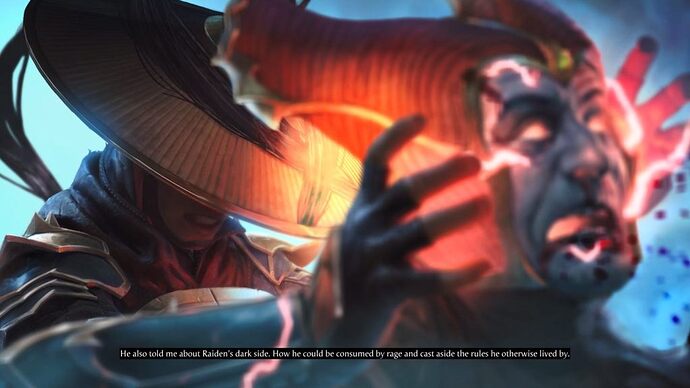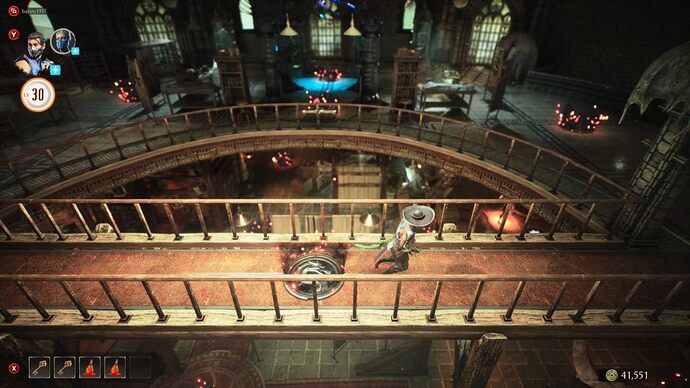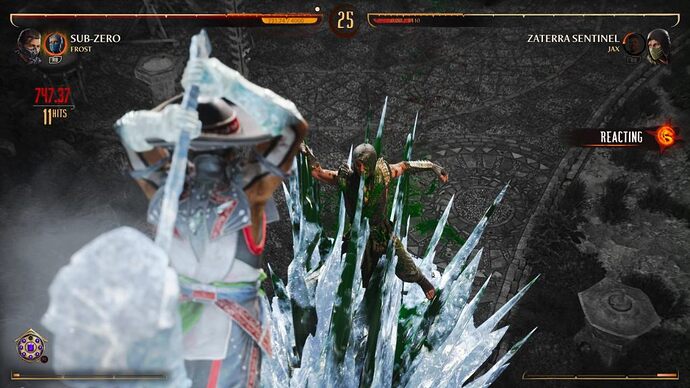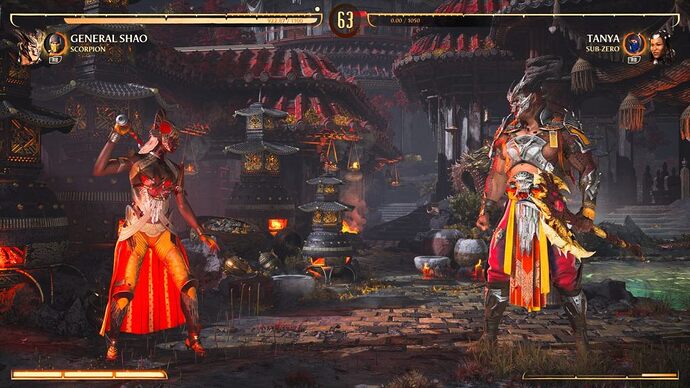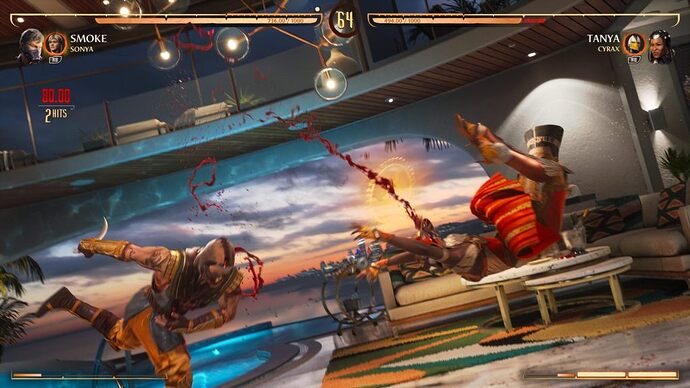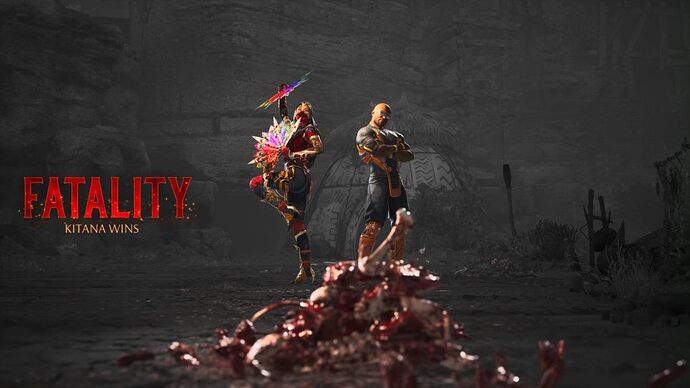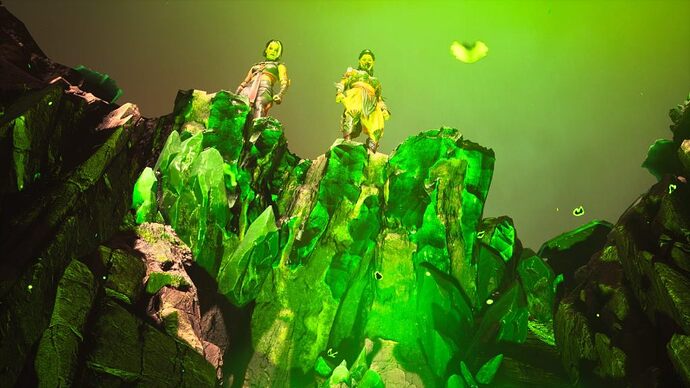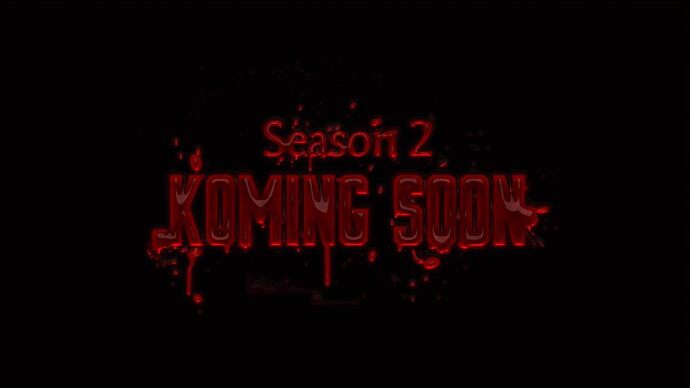Originally published at: Review | Mortal Kombat 1 - XboxEra
For the second time in the span of 12 years, the Mortal Kombat franchise going strong since the 90’s goes for an effective reboot – a bold move, considering the record success of the previous game. This new installment, dubbed Mortal Kombat 1, is finally upon us!
Everyone be Multiversin’
Interestingly enough, the reboot of the Mortal Kombat universe itself is part of its convoluted (and surprisingly great) plot, though this new beginning should be a good starting point for newcomers. Without getting too deep into the details of how the last 3 games essentially rewrote the classic games’ timeline, we need to establish the big bad boss of the previous game, Mortal Kombat 11: that being the deity of time, Kronika. Angered by the brutal punishment inflicted to her son by an angry Raiden (one of the protagonists with literal godlike powers) for attempting to take over all the realms, she decides to use her powers, combined with a conveniently introduced magic crown to create a new timeline called the New Era.
In the game’s climax, this was eventually thwarted by the hero of most classic Mortal Kombat games, Liu Kang, who inherited Raiden’s powers as the ancient warrior realized that every timeline went badly because of the conflict between Raiden and Liu Kang themselves, weakening the defenses against external forces. The new Fire God Liu Kang could not avoid the time reset itself, as Kronika has sent all realms back to the age of dinosaurs already before her defeat, but has elected to restore the universe anew, with the help of his soulmate of sorts, Kitana. The Aftermath DLC saw a fight between Fire God Liu Kang and an ancient sorcerer and historic Mortal Kombat villain Shang Tsung duke it out for the crown to reset the timeline, with two different endings based on who wins the struggle. Mortal Kombat 1 opens up after the so-called canonical ending of Liu Kang’s victory, in the New Era.
So this is how we reached this reboot, with Liu Kang restoring a new, hopefully more balanced and less conflict-ridden universe. There’s no Mortal Kombat without some conflict, drama and a scary big bad though: thus, one again, enter Shang Tsung, who now leads a rather miserable life as punishment for his misgivings in prior universes. That is before a mysterious benefactor approaches him, informing him that this universe was set up against him and that, as other worlds have shown, he could be destined for much more.
Thus, fittingly, this new Mortal Kombat timeline opens up more or less where the original game did about 30 years ago: in a Mortal Kombat tournament held between Earthrealm and Outrealm, with Shang Tsung this time not as the tournament’s boss but someone outside of it that’s scheming to overthrow everything. At least, that is the basic good vs evil premise, but trust me when I say this plot goes places, serving both as a fresh start for newcomers but also a direct continuation of the events set up in the previous 3 games’ continuity. If you were holding your breath for a fresh start, I’m sorry to disappoint you: this game is both a reboot and a sequel in more ways than one.
Fire God? But I Don’t Think He’s Employed
For this New Era, Liu Kang tried his best to give everyone the life they wished for and/or deserved, strengthening bonds, avoiding conflicts and rivalries where possible. Sub-Zero and Scorpion no longer share the rivalry based on deception like previously, but are in the same warrior clan and brothers. Kung Lao used to be Raiden’s protegé, but in the New Era they start as equals in a distant village as farmers, as they get recruited by Liu Kang for the upcoming Mortal Kombat tournament.
Interestingly, after putting everything into motion, he got rid of his time-manipulating powers, giving Geras the role of guardian of the hourglass we saw in great detail in Mortal Kombat 11. Thus, Liu Kang is now merely the protector of Earthrealm, trying to raise the champions to ensure they stay balanced with the forces of Outrealm and all other realms.
These character “resets” mean a lot of things for the roster. For one, almost everyone is quite a lot younger compared to their versions in the previous two games. But most importantly, their history and background changed, and in many cases their entire list of abilities has been altered to reflect their new stories. Reptile, for example, now regularly shapeshifts into, well, a reptile. But destiny has a way of making things happen, and as such, many key details (or canon events, if you prefer) still end up happening anyway, such as Kitana’s partial transformation or Raiden ending up with thunder powers despite not being a God in this universe.
The main downside however is that a lot of important characters (like Jax, for one) has very limited role in this game, and also the second generation of kombatants introduced in Mortal Kombat X (AKA the Kombat Kids), such as Cassie Cage, have yet to be introduced here. On the flipside, Johnny Cage is the absolute star of the story here, with tons of memorable lines and a surprisingly deep character arc all things considered. He may not be the campaign’s ultimate warrior, but he sure delivers some of the finest moments.
Once Upon a Time
The story takes place over 14 chapters plus what I’d call a bonus one, one highly replayable one due to some player agency I’d rather not spoil specifically. It took me about 4 hours to play through it on the Normal difficulty, which I’ve found to be quite fairly balanced, with none of the difficulty spikes or “cheating” bosses of Mortal Kombat (2011) and X in particular. The production values are stellar as usual, with the new character arcs working well as a background and the plot taking some rather dramatic and sometimes epic turns, all accompanied by the bombastic orchestral sounds that we got used to in Mortal Kombat 11 already.
The structure remains the same, with lengthy cutscenes followed by one or more kombat sequences, usually using one specific fighter per chapter. There’s even the comeback of Test Your Might QTE sequences for intense button-mashing moments: fortunately, though, those are optional, since the intensity of these button mashers is very high. All in all, I’ve found the new campaign to be more or less on part with Mortal Kombat 11’s stellar offering, with a more grounded and relatable start and some majestic setpieces later on, combining the best of both world of Mortal Kombat stories.
Recent Mortal Kombat games have had some shockingly good plots and cinematography (at least for figthing game standards), and as said this one is absolutely no exception. At the end of the day, however, most players are here to deal punches, kicks and murder their opponents with the deadliest fatalities, brutalities and so on. And Mortal Kombat 1 once again takes the basics of the previous 3 games, adding new layers on top and making various smart tweaks to the comb-, I mean, kombat formula.
Aside from improving from the already gorgeous Mortal Kombat 11’s graphics, the first thing that should stand out to fans is how each character’s movement and animation is extremely specific to their style. No longer it’s all about speed and weight anymore, with the animation style, smoothness of movement and general feel of each character seems a lot more defined than ever before, making controlling a slim and fast character Kitana feel completely different from a behemoth like Shao Ka- I mean, General Shao in this New Era.
New Moves
But aside from the individual fighters feeling rather different from one another, multiple tweaks to the actual kombat have been brought in. Starting from the fantastic basics of Mortal Kombat 11, blocks and perfect blocks have been tweaked, but most notably there’s a larger focus on aerial play. It was always possible to make moves and attacks in the air, but now there is a higher variety of aerial moves, and it’s now possible to connect a lot of them, allowing extremely skilled players to pretty much empty an opponent’s health bar without practically ever touching the ground.
I’ll gladly admit I’m not particularly great at fighting games, having played many throughout the years but having not really tried to master either one, so I have had a hard time connecting many aerial attacks in a row myself. But jumping online, seeing this system used flawlessly… man, it’s quite a blast. And as throughout the dozens of hours of this review window I started learning it more and more, it just kept becoming more satisfying. It’s like playing Rocket League with your wheels on the ground at all times and then realizing how many options you get if you start flying to the ball. It’s like a whole new game in terms of depth. There’s also a brand new taunt system, stage interactions have been removed, and so on. But the biggest change is the addition of the Kameo system.
The Kameo system takes cues from how the Towers of Time mode in Mortal Kombat 11 allowed players to have a tag kombatant alongside them, who could be called in at specific times to peform those normally playable characters’ iconic attacks. In that game, it was almost like a cheat code, since players could evoke them continously and their movements and attacks were in no way impacted by the presence of a second fighter on screen for a brief window. Mortal Kombat 1’s kameos are less decisive and more tactical, as our fighter will stop moving during most of these guest attacks, remaining vulnerable in case it goes sideways.
Aside from a few story moments, all fighters in all modes always have a kameo fighter to their side, and interestingly enough certain attacks can hit the kameo fighters too, with well-timed kameo attacks by both players allowing these “second tier” fighters to actually clash amongst them. And who are these fighters, anyway? On top of being able to use a handful of characters from the regular roster like Kung Lao and Raiden, there’s many classic fighters that are, unfortunately, exclusive to kameo roles as of now. The likes of Sub-Zero, Jax and Frost, for example.
Who’s Who
Indeed, one aspect of Mortal Kombat 1 that is destined to disappoint some fans is the roster, that at launch isn’t really smaller than Mortal Kombat 11’s base list, but that features an intentionally very basic and classic selection of characters, with many roles missing and, hopefully, reintroduced in some shape and form in future updates. As said, the Kombat Kids are no more, multiple important characters are relegated to kameo roles, though on the flipside there’s some exciting returns. These include the vampiric Nitara, voiced by Megan Fox no less, and the absolutely chaotic bad guy that is Havik, whose self-mutilating antics make for some hilariously creative attacks and finishers.
With the characters of the Kombat Pack 1 DLC from next year already known, with comebacks like Ermac and Quan Chi among the playable roles and Johnny Cage and Khamaleon in the kameos, on top of some spectacular crossovers with other IPs like Peacemaker, Omniman and Homelander. Between the regular kombatants and the kameos, Netherrealm Studios could effectively have 60-70 different fighters in the game (though there’s a few overlaps), making it one of the most packed entries in the franchise if they keep it up like this.
Of course, one of the most iconic aspects of Mortal Kombat are the finishers, ranging from fatalities to whatever insane variation they came up with throughout the years. For the uninitiated: if you beat your opponent, the game gives you a couple seconds to perform a series of button inputs that may translate into specific finishers, usually called fatalities. These are brutal to a comical extent, and feature beheadings, broken bones, cut limbs and more. But in a comedic fashion, with highly unrealistic physics and behaviours, with characters clearly taking pride in these bloody punishments. Throughout the years, the game introduced plenty of alternatives, and Mortal Kombat 1 has… certain things, not others.
Babalities and Friendships are seemingly gone, unfortunately, same for the stage fatalities and the newly introduced Mercy from Mortal Kombat 11. There is a wide selection of Brutalities however, brand new Kameo Fatalities, which are simplified finishers for your Kameo of choice, and lastly, the hilariously named Quitality. This is only a thing in online play, and it happens when your opponents disconnects, intentionally or otherwise, and sees their character perform a bloody self-imposed death. Honestly, it’s quite awesome, if rare. Each character starts with a fatality, a brutality nad a kameo fatality, with more brutalities easily unlockable but the second individual fatality that takes absolute ages to unlock unfortunately.
For the Lonely Ones
I’d use this opportunity to talk about how grindy many aspects of the game are. Yes, there’s microtransactions like in Mortal Kombat 11, with players being able to buy exclusive or rare cosmetics for their fighters, on top of the unfortunately still monetized easy fatality tokens (that bypass the complicated button inputs). It’s not too bad of a system, with a healthy influx of free koins that allow players to unlock many of these cosmetics randomly, via sacrifices to the shrine not unlike what we’ve seen in Mortal Kombat 11. More annoyingly however, each kombatant and kameo has an obscenely long mastery bar to fill with XP, each of them easily taking dozens of hours to fill up.
Sure, these unlock cosmetic items, but even unlocking a fighter’s second fatality takes many, many hours of grind to reach level 15, making it extremely difficult to unlock these finishers for fighters we are less comfortable playing with. I even ended up finishing every single fight of the Invasions season and plenty of timed events, and despite using Frost as my kameo for like 80% of the time, I’m still many hours away from mastery. And that’s a single character!
Solo players are recommended to start with the meaty tutorials, practice, then play through the story – after which, it’s time to either tackle the classic towers, in which players have to beat a certain amount of enemies to get a special ending for the character they used, or try the aforementioned brand new Invasions mode, which has been introduced instead of the increasingly convoluted Krypt mode from the prior games. These see the player choose a fighter (and a kameo), then exploring these top-down 3D environments on fixed paths from one node to another, not unlike the level selection of Super Mario Bros. 3.
Each node then contains either a fight, a Test Your Might button-masher event, a treasure and so on, with optional paths unlockable via solving klues (yeah, the game loves to use Ks instead of Cs) or by obtaining key items. Not unlike Towers of Time in Mortal Kombat 11, however, the advantage tends to be in players’ hands, who can use upgradeable talismans, power-ups, level up to boost their stats and more to get through through increasingly tough fights. Though the AI enemies themselves can use some rather annoying effects in these fights, making certain encounters legitimately annoying.
Effects that turn the screen almost fully black when we get close to the opponent, smoke that makes you lose your combos every couple seconds, and the much maligned Chaos effect making a comeback too that straight-up changes your button input’s effects. It’s a really fun mode with many hours of content to progress through now and in each subsequent season that will get tons of new battles in the future therefore, though some encounters are more frustrating than challenging.
Kompetition
And what about online? Well, it works, though without truly impressing as of now. The usual variety of custom and ranked fights, with 1v1 and King Of The Hill (where you keep fighting opponents as long as you win) modes alike and a ranked ladder to climb too. So far there’s not many modes, only a relatively limited selection of unlocks tied to winning these matches, and I did find a surprising amount of laggy matches already, despite the presumably strong launch sales and the presence of crossplay that should guarantee a very healthy playerbase.
Hopefully this is just some launch woes and that, as the playerbase stabilizes a bit and the first patches hit, will be ironed out. The community has also found a handful of really OP combos with certain characters that are being slightly exploited in online matches already, but that’s just every fighting game’s life cycle. The nerfs and buffs are coming, surely.
There have been some rather funny screenshots and videos floating of the extreme sacrifices made to the graphics of the game to make it run on Nintendo Switch, but on Series X (where I tested the game for over 30 hours in these days) it looks and runs like a dream, for the vast majority of the time. Extremely detailed but never distracing backgrounds, excellent character models with smoother than ever animations, all this running at a supersmooth 60fps at a very high resolution (that, by my eye, looks fairly close to 4K).
The cinematic cutscenes are predictably rendered at lower framerates, for understandable reasons, but when these cinematics turn into gameplay the graphics doesn’t drastically worsen like we’ve seen in prior games, offering a surprisingly smooth transition overall. I did encounter some rare moments where the framerate started dipping visibly during a handful of fatalities, but in terms of actual gameplay I don’t recall a single instance where the performance didn’t keep up with the action, even in some of the more chaotic Invasions events with half a dozen modifiers messing up the visibility.
Mortal Kombat’s Biggest Rival is Mortal Kombat Itself
So by now you probably realize I’m rating Mortal Kombat 1 rather highly, as I’ve had a blast putting big hours into this eternal franchise’s new installment. Is it the definitve Mortal Kombat experience though? Well, not quite. Even without making direct comparisons with Armageddon’s astonishing 60+ kombatant roster and its ridiculous customization options, the very recent Mortal Kombat 11, especially in its Ultimate edition with the extra fighters and the Aftermath DLC, is a far meatier package, with a lot more fighting styles, more kombatants, more fatalities, more game modes and wagons of stuff to unlock, with the best version of the Krypt yet that was only partially substituted by the new Invasions mode.
It also has to be said that while the story does start a new timeline, both the plot and gameplay heavily takes cues from the previous games, making it not that optimal as an entry point to the franchise. In that, Mortal Kombat (2011) pressed the reset button in a more convincing fashion, allowing fans who have fell off the franchise (like me) to jump in with very little baggage. Mortal Kombat 1 is ultimately less of a reboot and more of an improvement over the animations, mechanics and general balance of the previous game, with the New Era yet having to introduce many of the fighters, game modes and finisher styles that we expect from the franchise at this point.
But we know there will be many seasons of Invasions, new fighters such as crazy crossovers like Omniman (from Invincible) and Homelander (from The Boys), so chances are MK1 is about to become one behemoth of a game too. And with how much there is to grind with each character and kameo fighter to unlock everything, get ready to stick around for the long haul!
And ultimately, that’s Mortal Kombat 1’s dilemma. It delivers a fantastic storyline with sensational fan service, extremely smart gameplay improvements, the new exciting Invasions mode, the Kameo system that throws in a lot of depth, with visuals absolutely unparalleled by any fighter on the market. The reboot, however, isn’t quite as valid of an entry point for newcomers as initially suspected, and with (so far) much less content and vareity than Mortal Kombat 11’s 4-year long support, it is perhaps not an essential buy for less enthusiastic fans – for now, at least.
Still, Mortal Kombat 1 is one hell of a fighting game, one that I can see myself putting in as many hours as Mortal Kombat 11, if not more, and I’m really excited about its future.
